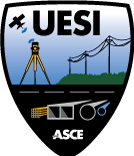Similar to Canada, UK and Australia, asset management rules and requirements have recently been enacted in the US to improve the condition, resiliency, and sustainability of our water infrastructure assets as well as protect the public and environment from catastrophic failures. These requirements have taken various forms including:
- State asset management requirements
- State operating permit requirement
- State revolving fund (SRF) loan requirements
- America's Water Infrastructure ACT
States such as Michigan, driven by the Flint water crisis, have created legislation, specifically Act 399 amending the State Drinking Water Act, to require asset management program plans to be submitted by January 2018 for Water Systems serving more than 1,000 people. These plans include creating asset inventories, defining service levels, evaluating asset conditions and their consequence of failure to produce a risk-based capital improvement plan. Additional states such as Ohio and Indiana have followed with Senate Bill 2 in Ohio requiring all asset management program plans be submitted by October 2018 and Indiana under Senate Bill 362 beginning in March of 2018 for any new or expanded treatment plants or any new or revised National Pollutant Discharge Elimination System (NPDES) permits.
Another mechanism for requiring asset management programs has been through state permitting processes. For example, in New Jersey any Wastewater Combined Sewer Overflow (CSO) permit holders are required to produce an asset management program document within one year of permit renewal.
In New York, similar requirements are also being included in NPDES permit renewals. Applying for an SRF loan in 2019 also comes with requirements for asset management program plans depending on which state you are in, with some giving priority points towards the application, some requiring a plan just for the proposed project and others requiring a system plan. To make things even more complicated, the America's Water Infrastructure Act (AWIA) of 2018 is requiring an evaluation of the risk and resilience of assets from malevolent acts or natural hazards for all US water systems serving more than 3,301 people.
Navigating through these various documents, it is apparent that the rules and requirements are not comprehensive, sometimes vague or confusing to understand what is actually required and may require repetitive work unless a comprehensive asset management program is thought out and undertaken. For example, complying with AWIA can build from an existing asset management program. Both require identifying the assets most critical to the water system or those that have the highest consequence of failure. Doing this thoroughly once can be used for both.
Asset management best practices evaluate asset performance against all potential failure modes including mortality (from natural causes), capacity, efficiency, and level of service to determine risk and drive capital or operations and maintenance (O&M) needs. AWIA evaluates assets against external threats from malevolent actions and natural causes which can also be viewed as performance failure modes for an asset.
Evaluating all the performance failures together and identifying the most likely to occur first provides a comprehensive look at the timing of potential capital and O&M needs. For example, a water pumping station may have average conditions related to mortality, capacity, efficiency and level of service but poor performance related to flooding potential. With this knowledge, the utility can determine if they need to act immediately to address the flooding potential by relocating the facility or raising up the equipment or determine if it would make sense to wait a little longer until the other performance degrades and address the performance failures all at one time.
To get started on a comprehensive asset management program and begin to integrate the various rule requirements, there are some excellent resources available to help utilities including the following:
- Water Environment Research Foundation (WERF) Sustainable Infrastructure Management Program Learning Environment (Simple). This is a web-based knowledge base that provides an understanding of the principles of asset management, the essential components of a state-of the-art asset management program, and "how to" information to begin a program including basic tools and templates.
- International Standards Organization (ISO) 55000 series. This is an international standard for asset management programs that include an overview of asset management principles and terminology, key requirements for a comprehensive program, and guidelines on the application of the requirements.
- Virginia Tech Sustainable Water Infrastructure Management (SWIM)center. WATERid includes a searchable knowledge database including case studies, data and resources for asset inspection, renewal, and risk-based planning. SWIMed includes online training courses training for water infrastructure asset management currently in three modules, Fundamental Topics for Asset Management, Advanced Topics for Asset Management, and Asset Management Plan.
The good news is complying with the requirements and implementing a comprehensive asset management program, even if you might not be ready to do right now, if regulatory driven, will provide overall benefits to your utility and ultimately help the industry as a whole to achieve better grades on the ASCE Infrastructure Report Card. The most common benefits include:
- Reduction in risk of catastrophic asset failures through risk mitigation
- Capital cost savings through risk-based prioritization
- O&M cost savings; shifting from reactive to proactive programs
- Maintain or improve service levels; defining goals and measuring progress
- Rate stability over time; long term funding identification
Are you interested in promoting these topics through ASCE to help educate the next generation of Civil Engineers and improve the Infrastructure Report Card? Consider joining the UESI Asset Management Division Water Infrastructure Committee.
Ca

